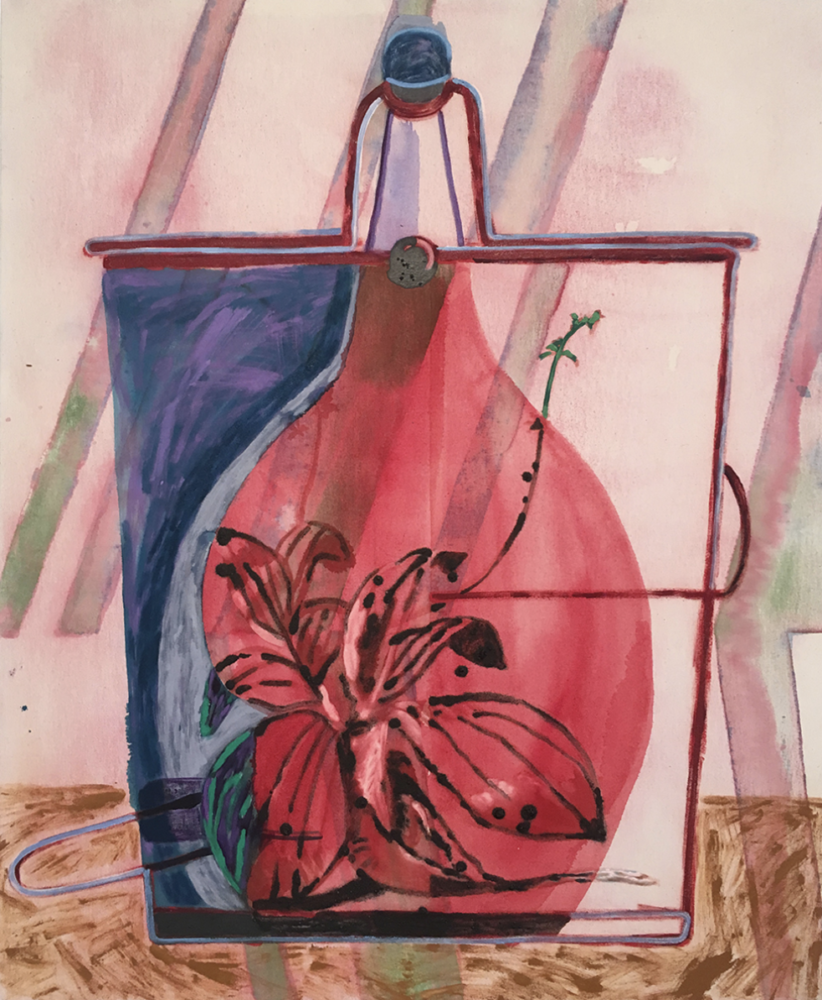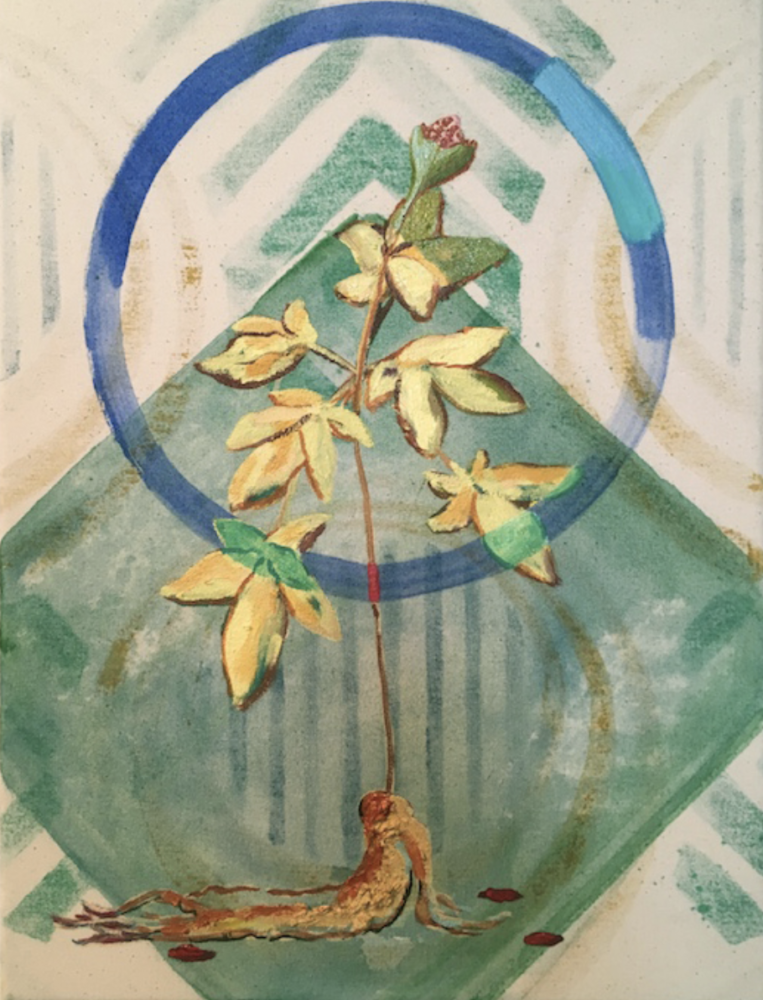A: Can you speak on the relationship between your practice/process – staining, dyeing, pouring and textile patterning – and the subject of domesticity, women’s labor and liminality in your work?
AG: In my most recent shows, Casa della Nuova Strega (2018) and Herbal Lore (2019), I connect remedy and ritual together, imagining a contemporary women’s domestic interior as a meeting point of popular science and mysticism, where anxiety and stress are sublimated into wellness culture practices. Using the painterly stain as a painting-cousin to textile dyeing processes, I united what were previously oppositional poles – the stain and geometry – into one element, a textile pattern that functioned as ground or wallpaper for the interiors. The specific patterns were inspired by female artists and designers of the 20th century – Stepanova Varvara, Lyubia Popova, and Sonia Delaunay.
These patterns linked a lot of my formal interests with a condition I am interested in: situations where women have redirected their ambitions due to economics, politics, or prohibitions on what they could not do otherwise. If you are Sonia Delaunay, and you want to support your husband as the primary artist in the family, you stop painting on canvas, and instead start producing amazing textile designs that are pretty much abstract paintings in their own right. If you’re Varvara, you want to make work “for the people,” so you leave painting for textile design. If you were a woman at the Bauhaus, and you couldn’t pursue painting, you pursued textiles. In herbalism, if you are a woman interested in medicine in the medieval era, you can’t go to university, but you can marry an apothecarist and work in the field by proxy. Or you can become a healer woman… or a witch. Or So this kind of pivoting, or multiple hat-wearing, I see a lot of that in women and design in the 20th century, and it’s these kinds of patterns that interested me.
In the studio currently, I’m thinking more about the psychological impact of magical thinking or placebo effect in relation to ritual and healing, so I’m back to using the pour in a more free and atmospheric way, to get to an exciting, or unpredictable feeling. It’s returning to a previous mode, and it’s been really gratifying to re-engage from a different angle.
A: Can you talk about the paintings you exhibited at Crystal Flowers last year?
AG: I was thrilled when Katherine Aungier and Allison Wade approached me about a show. Crystal Flowers NYC is a sometimes-salon and exhibition space in Allison’s apartment, which happens also to have been the salon of Florine Stettheimer and her sisters. I was familiar with Florine’s work because of the retrospective at the Jewish Museum, and had been interested in the liveliness in her paintings, as well as her whimsical selection of frames. Specifically, she had made an homage to Duchamp, and framed it with his initials running all the way around the canvas “MDMDMDMDMD”. This was what I was thinking about when I adorned one of my small paintings with some Old Man of the Woods mushrooms (Strobilomyces floccopus) that were laying around, dried to all hell in my studio. Ideally I would have had enough to make a whole border, but instead I positioned the few I had on top of the stretcher to visually link some of the linework on the painting, connecting it to the mushroom, and by extension to ecosystems outside the canvas.
That painting, Materia Terra, was part of a series that I am continuing for my next show, that posits herbalism as a nexus point of alchemy, medicine, ecofeminism, and magical thinking.
What excites me about this subject is that parts of herbalism are scientifically verified, and parts are untested, and parts are magical thinking, which deserves critique if it’s being peddled for profit (see: goop), but as a mode of imagination — this intrigues me. Painting is also a semi-truth, always reflective of the material world, and part of it, but a space of imagination and thinking though possibilities as well.
Other paintings I made for Herbal Lore were based on imagined interiors and talismanic or transformative objects a contemporary mystical/healing woman might have around her: flasks and stills, vitrines and snakes, moche figurine bongs, these kinds of things. I also used the smaller paintings as a means to imagine impossible hybrid plants, intended to cure what ails you – a peppercorn/ginkgo hybrid for circulatory and respiratory health, for example. My attitude is both sincere – I forage, and love learning about this kind of knowledge, but am skeptical of the way that these kinds of plants and materials feed into wellness culture, which has a tendency to isolate ideas of health solely in the individual body, and not in relation to greater communities and systems.
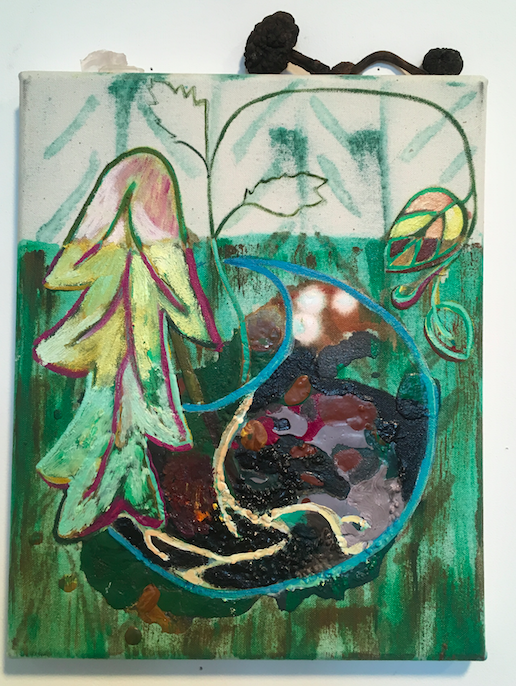
Materia Terra, Oil, Acrylic, Magnum Coarse and Strobilomyces floccopus on canvas, 11" X 9", 2018

Stone, Acrylic and Magnum Coarse on Canvasw, 34.5" X 37", 2019
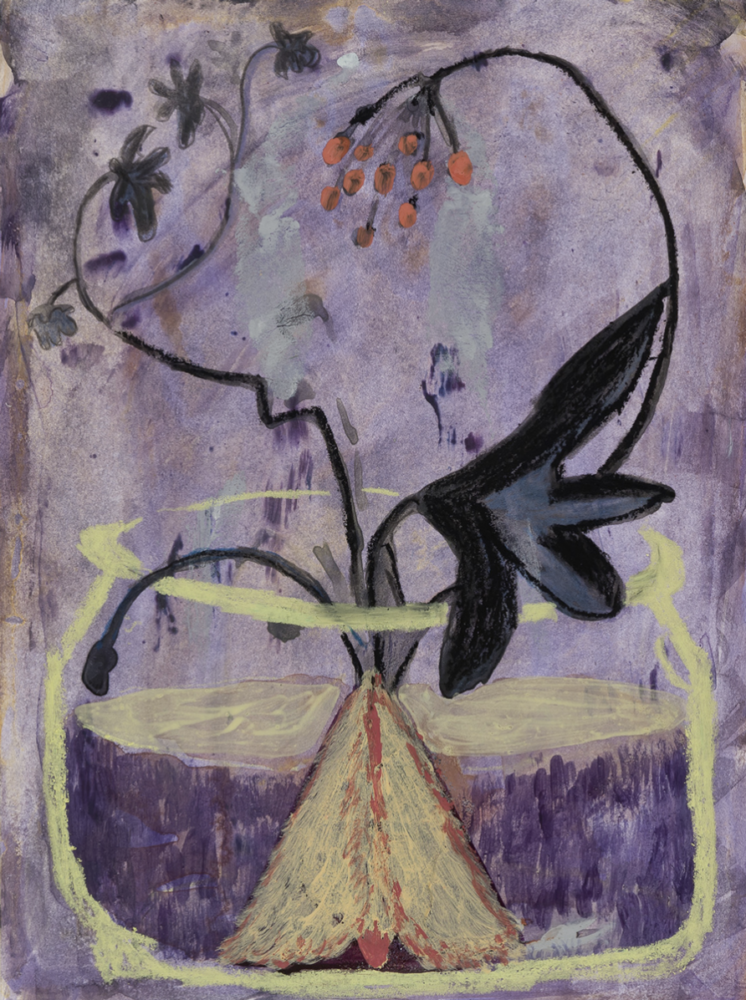
Lepidoptera, Acrylic, Caran D'Ache, and Pencil on Paper, 12" X 9", 2018

Dustpan Drawing: Love Induction, Acrylic Caran D'Ache, and Pencil on Paper, 12" X 9", 2018
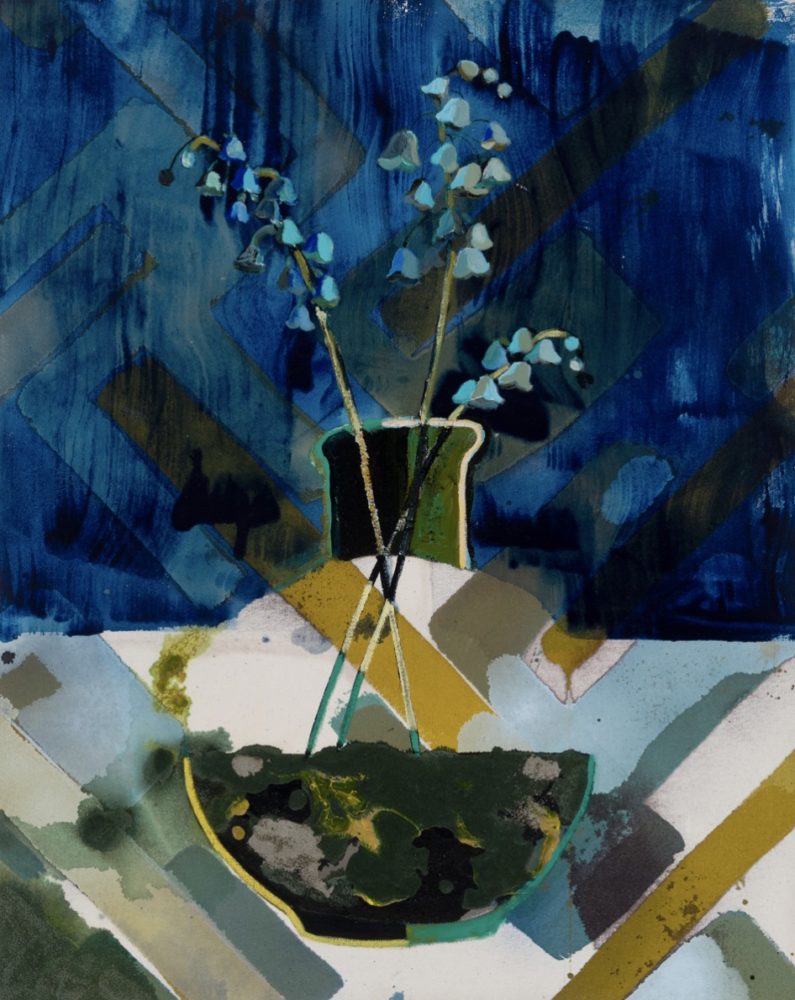
Nightshade, Oil and Acrylic on Canvas, 20" X 16", 2018







